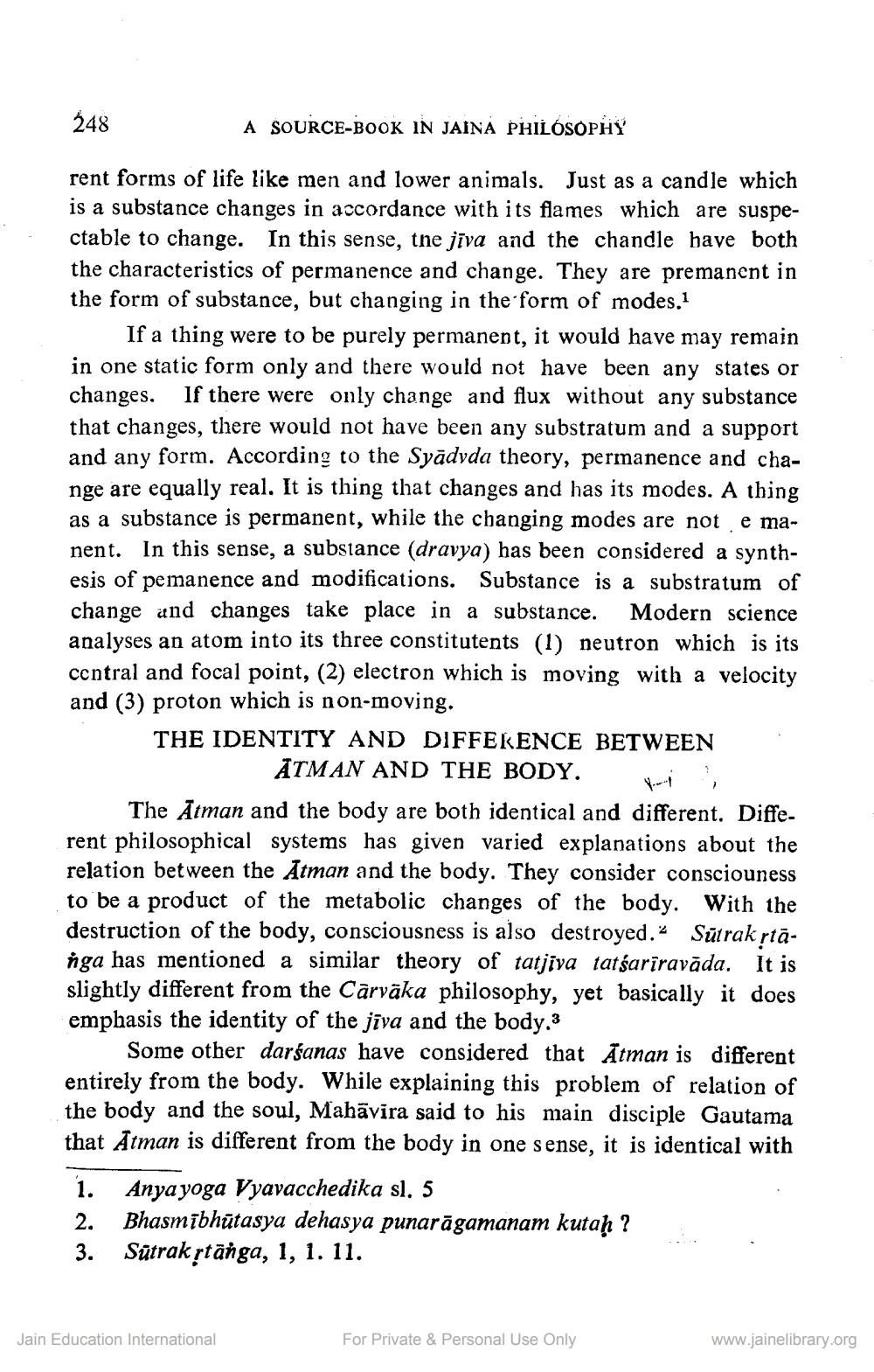________________
248
A SOURCE-BOOK IN JAINA PHILOSOPHY
rent forms of life like men and lower animals. Just as a candle which is a substance changes in accordance with its flames which are suspectable to change. In this sense, the jīva and the chandle have both the characteristics of permanence and change. They are premanent in the form of substance, but changing in the form of modes.1
If a thing were to be purely permanent, it would have may remain in one static form only and there would not have been any states or changes. If there were only change and flux without any substance that changes, there would not have been any substratum and a support and any form. According to the Syādvda theory, permanence and change are equally real. It is thing that changes and has its modes. A thing as a substance is permanent, while the changing modes are not e manent. In this sense, a substance (dravya) has been considered a synthesis of pemanence and modifications. Substance is a substratum of change and changes take place in a substance. Modern science analyses an atom into its three constitutents (1) neutron which is its central and focal point, (2) electron which is moving with a velocity and (3) proton which is non-moving. THE IDENTITY AND DIFFERENCE BETWEEN
ĀTMAN AND THE BODY. Hori ! The Atman and the body are both identical and different. Diffe. rent philosophical systems has given varied explanations about the relation between the Atman and the body. They consider consciouness to be a product of the metabolic changes of the body. With the destruction of the body, consciousness is also destroyed.” Sūtrak rtā. nga has mentioned a similar theory of tatjiva tatśarīravāda. It is slightly different from the Cārvāka philosophy, yet basically it does emphasis the identity of the jīva and the body,3
Some other darśanas have considered that Atman is different entirely from the body. While explaining this problem of relation of the body and the soul, Mahāvira said to his main disciple Gautama that Atman is different from the body in one sense, it is identical with 1. Anya yoga Vyavacchedika sl. 5 2. Bhasmībhūtasya dehasya punarāgamanam kutaḥ ? 3. Sūtrak stānga, 1, 1. 11.
Jain Education International
For Private & Personal Use Only
www.jainelibrary.org




